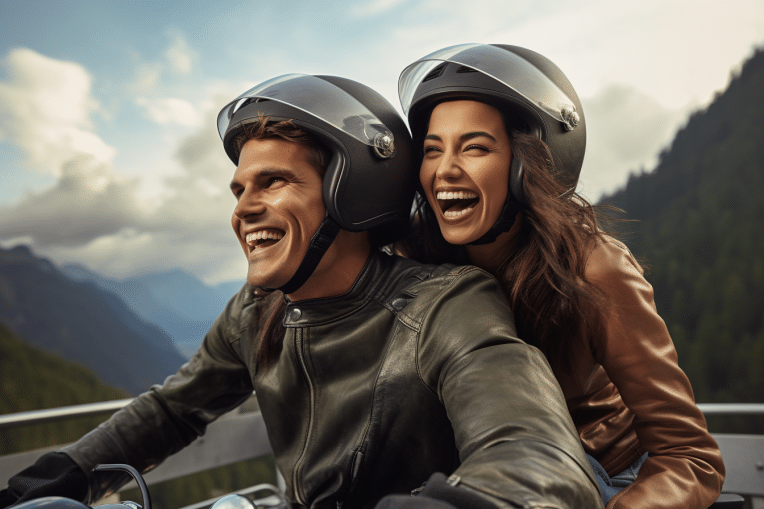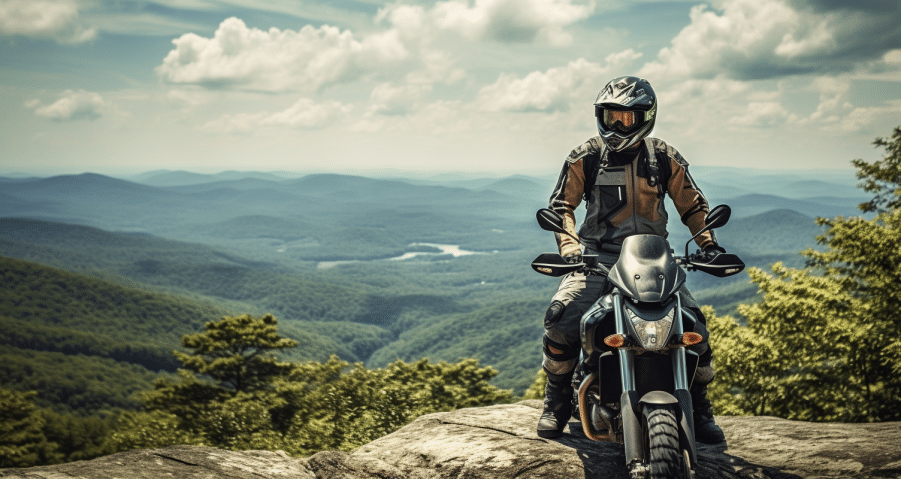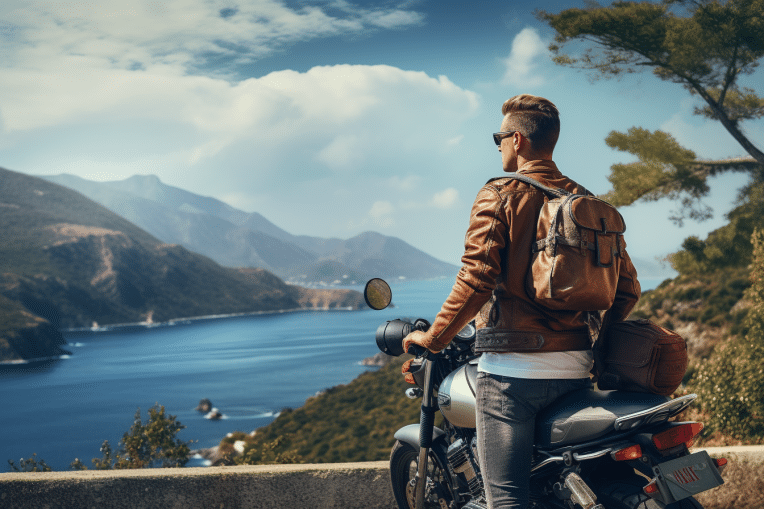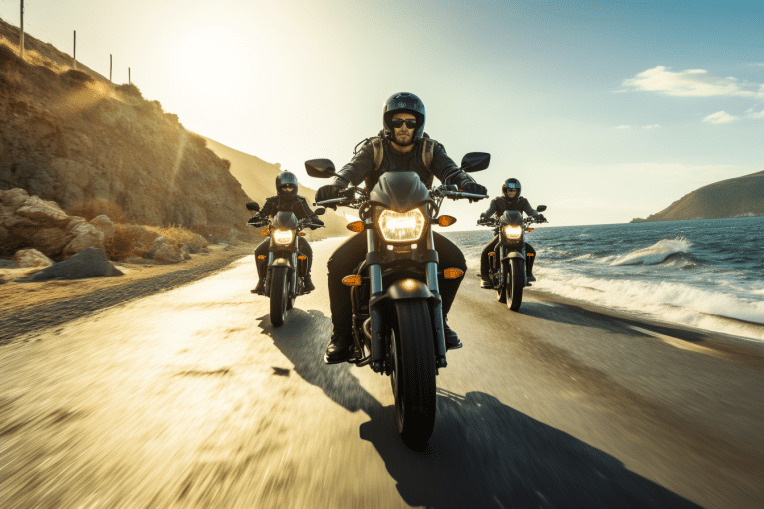Try to picture this: The sun is shining, and the open road is mesmerizing you. You’ve got your motorcycle, and you’re itching to take off. But there’s a twist—someone is sitting on the passenger seat, ready to share the adventure with you. If you’ve ever wondered what it’s like to ride two-up, then AA Motorcycle Shipping will help you obtain a useful guide. We’re diving into the world of motorcycle riding for beginners, with a passenger in tow. So, get ready to master the art of the passenger seat!
1. The Joy of Sharing the Ride
Motorcycle riding two-up offers a unique thrill that’s quite distinct from solo riding. As a beginner, you’ll quickly discover the joys of sharing the ride with a friend, partner, or family member. The experience is inherently communal, allowing you to bond over the sights, sounds, and sensations of the open road. Many riders find that riding two-up strengthens their relationships and creates memorable shared experiences.
2. Choosing the Right Bike
For beginners, selecting the right motorcycle for two-up riding is crucial. Opt for a bike with a comfortable and spacious passenger seat. Larger touring motorcycles, cruisers, or adventure bikes often provide ample space and comfort for both rider and passenger. Some motorcycles come with integrated backrests and passenger-friendly features, making the journey even more enjoyable.
3. Gearing Up for the Ride
Safety should be the top priority when riding two-up. Proper gear is essential, and this applies to both the rider and the passenger. Helmets, riding jackets, gloves, and sturdy footwear are non-negotiable. Ensure that the gear fits well and provides adequate protection in case of unforeseen circumstances. Motorcycle gear not only offers protection but also shields against wind, weather, and debris. As a beginner, it’s important to understand that safety gear isn’t an option; it’s a necessity.
4. Passenger Briefing: Leaning and Balance
One of the key aspects of mastering the passenger seat is learning to work in harmony with your co-rider. As the rider, it’s essential to brief your passenger on what to expect during the ride. They should understand how to lean with you, especially when navigating turns and bends. Maintaining balance is critical for a smooth and safe ride. Communication between the rider and the passenger is key. Make sure you establish a system for signaling upcoming maneuvers, so your passenger can adjust their position accordingly. These coordinated efforts ensure a secure and enjoyable journey.
5. Start with Shorter Rides
For beginner riders, it’s wise to start with shorter two-up rides before venturing on longer journeys. Riding with a passenger changes the dynamics of your motorcycle, affecting balance and handling. Practicing on shorter trips allows both you and your passenger to acclimate to the experience. It’s an opportunity to build confidence and master the nuances of two-up riding in less demanding conditions.
6. Weight and Balance
The added weight of a passenger affects your motorcycle’s balance and handling. It’s essential to be mindful of this when riding two-up, especially during maneuvers like turning, braking, and accelerating. Practice in an empty parking lot or quiet streets to get a feel for how your motorcycle handles with the added weight. You’ll learn how to distribute the weight effectively and maintain stability, ensuring a safe and comfortable journey.
7. Smooth Acceleration and Braking
Smooth and gradual acceleration and braking are key to a comfortable two-up ride. As a beginner, it’s common to be a bit more cautious when you have a passenger. Start slowly, and avoid abrupt acceleration or harsh braking, which can be uncomfortable for your co-rider. Gradually build up your confidence and skills to ensure both you and your passenger have a pleasant experience.
8. Plan Your Route
Planning your route is crucial when riding two-up, especially as a beginner. Consider your passenger’s comfort, interests, and any necessary stops. Communication is key; discuss the route in advance and make sure both you and your passenger are on the same page. Plan rest breaks, meals, and scenic stops to make the journey enjoyable for both of you.
9. Pack Light and Secure
When riding two-up, be mindful of how you pack your gear and luggage. Ensure that everything is securely fastened to the motorcycle to maintain balance and stability. Additionally, pack lightly and efficiently to avoid overloading the bike. Discuss the packing strategy with your passenger to ensure that they are comfortable and not overwhelmed by the load.
10. Enjoy the Experience
Finally, as you embark on your two-up riding adventures, remember to enjoy the experience. Riding with a passenger is an opportunity to share the open road, build memories, and strengthen bonds. Embrace the unique joys and challenges that two-up riding offers. Each journey is a new opportunity for growth and connection.
How AA Motorcycle Supports Two-Up Riding Enthusiasts
For motorcyclists, including beginners venturing into the world of two-up riding, AA Motorcycle offers invaluable support. Their services encompass motorcycle shipping, parts, and maintenance, ensuring that your beloved ride is always in optimal condition. Additionally, AA Motorcycle’s shipping services make it convenient to explore new destinations with your passenger.
Whether you’re planning a weekend getaway or a cross-country adventure, our services are a trusted ally for motorcyclists, further enriching the passion for riding two-up and ensuring that your journeys are seamless and memorable.
Final Words
In conclusion, mastering the passenger seat and motorcycle riding two-up as a beginner is a rewarding journey. It’s an opportunity to share the thrill of the open road with a companion while building bonds and creating lasting memories. With the right gear, safety precautions, and practice, you’ll soon be on your way to becoming a confident two-up rider. So, are you ready to share the ride and explore the world from the passenger seat of your motorcycle? Ride Safe!




